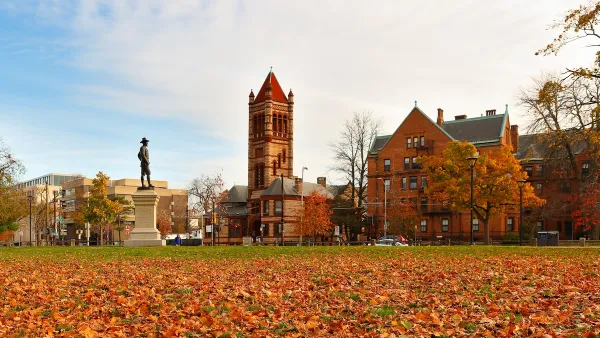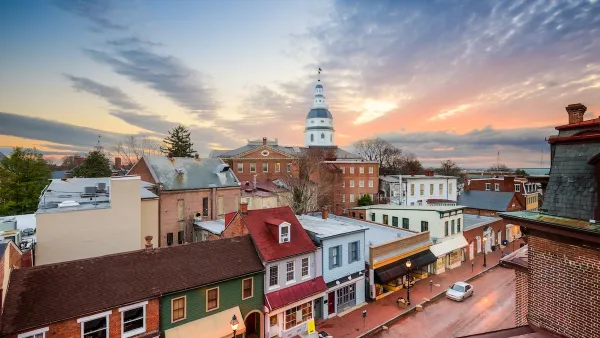In an urbanizing world, density is being recognized for its ability to stimulate the "metabolism of daily life." In an essay for The Wall Street Journal, Richard Florida argues that all density is not created equal, however.
According to Florida, "researchers at the Santa Fe Institute have been able to demonstrate that
bigger, denser cities literally speed up the metabolism of daily life....Doubling a
city's population, the Santa Fe researchers found, more than doubles its
creative and economic output, a phenomenon known as 'superlinear
scaling.'"
So how should cities stimulate density? By building up, of course.
Not so fast, says Florida. The means to achieve density are more important than the ends, he argues. Take Shanghai for example, where densities can approach 125,000 people per square mile, but whose output of innovation and creativity, "pales in comparison to New York, London, Paris and Milan." The cause for this discrepancy, Florida writes, is that, "what matters most for a city's metabolism-and,
ultimately, for its economic growth-isn't density itself but how much
people mix with each other."
And this mixing, what Peter Gordon of the University of Southern California and Sanford Ikeda of the State University of New York, Purchase call "Jacobs density", is the key to understanding the sociological component to how density works. This type of density, in contrast to what Gordon and Ikeda term the "crude" density of tall buildings, is what "sparks street-level interaction and maximizes the 'potential informal contact of the average person in a given public
space at any given time.' It makes networking and informal encounters
more likely and also creates a demand for local products and
diversity-not just of populations and ethnic groups but of tastes and
preferences."
FULL STORY: For Creative Cities, the Sky Has Its Limit

Analysis: Cybertruck Fatality Rate Far Exceeds That of Ford Pinto
The Tesla Cybertruck was recalled seven times last year.

National Parks Layoffs Will Cause Communities to Lose Billions
Thousands of essential park workers were laid off this week, just before the busy spring break season.

Retro-silient?: America’s First “Eco-burb,” The Woodlands Turns 50
A master-planned community north of Houston offers lessons on green infrastructure and resilient design, but falls short of its founder’s lofty affordability and walkability goals.

Test News Post 1
This is a summary

Analysis: Cybertruck Fatality Rate Far Exceeds That of Ford Pinto
The Tesla Cybertruck was recalled seven times last year.

Test News Headline 46
Test for the image on the front page.
Urban Design for Planners 1: Software Tools
This six-course series explores essential urban design concepts using open source software and equips planners with the tools they need to participate fully in the urban design process.
Planning for Universal Design
Learn the tools for implementing Universal Design in planning regulations.
EMC Planning Group, Inc.
Planetizen
Planetizen
Mpact (formerly Rail~Volution)
Great Falls Development Authority, Inc.
HUDs Office of Policy Development and Research
NYU Wagner Graduate School of Public Service




























